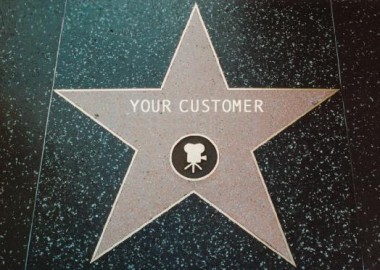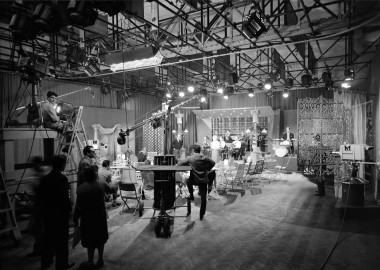
Hey! Is your company at least one year old? That’s a good start. What about 50 years old? 100? No matter what, you’re sitting on a gold mine. Seriously. Those dusty forgotten corporate archives are going to pair magically with social media for both internal and external brand storytelling.
What a relief, right? If you’re running content creation for a brand, you know what a grind it can be to create meaningful stories every single day. Feeding the content beast can feel impossible, but there is relief. Instead of pounding out yet another keyword-rich blog post, start by taking a look through your own closets.
We all stand on the shoulders of those who came before. We can build on their achievements, and create something bigger, by tuning in to their histories. This is how we can tell our big identity stories and create our brands, whether as individuals, entrepreneurs, small companies or large corporations: one micro-story at a time.
Your History Is an Asset
Is your organization properly leveraging its legacy? Answer yes if you’re sharing stories of your history and development with your customers. Answer a double yes if you use archival materials to tell these stories.
Today, the widespread digitization of historical material and institutional holdings makes history ever more accessible and, because archival records are authentic and trustworthy, more reliable. Fun fact: modern archives came into existence as a response to the French Revolution and the demand of the people to have access to information. Their information. Their stories. Your customer’s relationship with your brand is also all about their story. When you share your archives with them, you’re drawing them into closer relationship with you.

All the Cool Brands Are Doing It
Archives and social media match up beautifully not only because of the inherent value of archival material, but because the material tends to be visually driven and immensely shareable. It’s content that people are happy to post on their Facebook Walls, retweet or repin. It’s particularly valuable for brands working to leverage Pinterest or Instagram with their audience.
Fashion houses are leaders in putting their old materials to good use. Befitting their iconic histories, they use archives and social media to attract fans of the brand. Consider Burberry’s Pinterest board, structured to showcase a core message of British quality and style. There’s English weaving, adventurers flying around the world and lots of Kate Moss. It’s not the most creative solution, but it is effective and popular — and so very sepia. At the other end of the spectrum, Christian Dior employs a nearly “anti-Pinterest” solution with boards devoid of images but full of legacy, entirely devoted to one quote from their visionary founder. Without a single photo, it powerfully evokes the brand’s iconic “New Look.”
Over on Instagram, the visual language of the medium has inspired remixed images featuring Coco Chanel recast in pop art social images. These images strike a harmonious balance with the brand’s larger goals for this campaign (#ChanelHolidays).
Louis Vuitton, which prides itself on heritage and craftsmanship, also understands the value of preserving and sharing its past. The current exhibition Volez, Voguez, Voyagez — Louis Vuitton relies heavily on archived material to tell the brand’s story from its beginnings in 1854 to today. Outside of the museum, the brand has used archival material to launch featured collections, such as its fast-fashion effort with retailer Selfridges, Louis Vuitton X Selfridges. The archival material works to keep Louis Vuitton’s brand aspirational in the context of mass market retail.
Telling Stories With Social Media
You’re convinced. What are some first steps to daylighting your archives for social media?
- Audit your resources. Dig through closets, banker’s boxes and that weird gap beside the photocopier. Warning: this is messy work!
- Scan and store. Figure out a convenient and secure place to store digital assets, and get a professional in to scan.
- Find a place for everything. Maybe you’ll take a page from Burberry’s book or unleash your designers on imagery like Chanel’s. Think of your marketing goals and the stories you want to tell, then launch your archives into social media.
One of the most important functions of archives and other cultural organizations, such as museums and art galleries, is to allow for the possibility and expression of multiple narratives. This also happens to be one of the key powers of social media. In addition to being a tool for communication and engagement, social media allows anyone to engage in the creation of multiple stories through posting, commenting and liking. Whatever story you’re telling, prepare to engage with your audience. It’s never a one way street.
Your historical legacy comprises stories that are absolutely unique to your organization, stories that no one else can tell. Stories of pride, of discovery, of connection. The goal is always the same: inspire, inspire, inspire.
Top image courtesy of the Louis Vuitton Archives.





